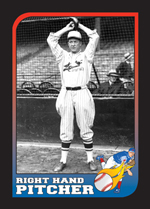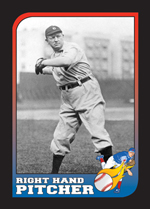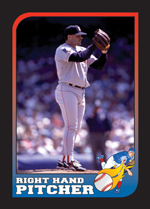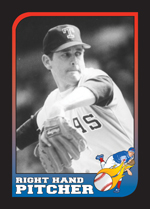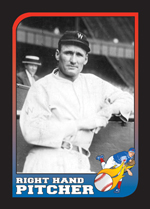
“He’s got a gun concealed about his person. They
can’t tell me he throws them balls with his arm.”
- Ring Lardner
Walter Johnson
(1907-1927)
The Big Train
Like Babe Ruth, Walter Johnson was well ahead of the game. A fastball
like his would not be seen until Bob Feller, Nolan Ryan or Randy Johnson. Easily
he was the power pitcher of the era and, although he played for the traditionally
weak Washington Senators, he won 20 games twelve different years and
over 30 in two seasons. Amassing 417 wins, he is second only to
Cy Young’s untouchable win mark of 511. But Johnson also
has a record that will never be touched – 110 career shutouts,
a mark twenty above second place Pete Alexander. His finest year
was 1913 when he went 36-7 with a miniscule 1.14 ERA. His career
ERA of only 2.17 is remarkable.
He was considered the ultimate gentleman on the field, although he holds
the career record of hit batsmen. He had several legendary pitching
duels with another Hall of Famer, Babe Ruth, usually on the losing end. He
held the strikeout record for 56 years, a mark many thought impossible
to break until Steve Carlton and Nolan Ryan came along.
